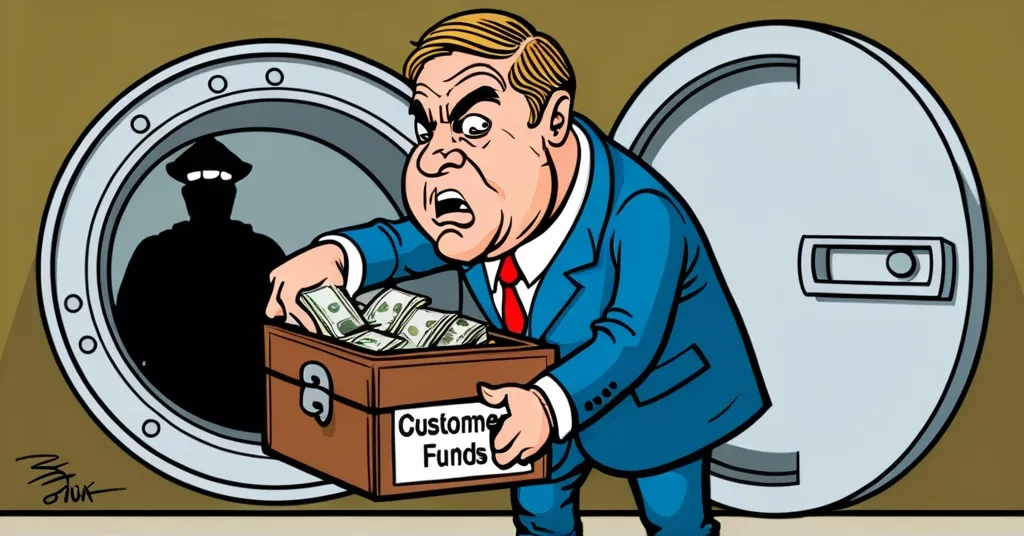Bank Exec Charged in $4.3M Embezzlement: BOK Financial Reveals 11-Year Scheme

Bank Executive Accused of Embezzling Over $4 Million in 11-Year Scheme
The audacity of financial exploitation has reached unsettling heights as William Shane Garrow, a former senior vice president at BOK Financial Securities, is alleged to have embezzled over $4.27 million from customer accounts. This revelation not only brings to the fore significant concerns around internal banking controls but also touches on the delicate issue of trust in financial institutions.
- Garrow allegedly embezzled $4,277,227 from at least 16 customer accounts.
- The fraudulent activities reportedly occurred between September 9, 2012, and April 10, 2024.
- BOK Financial terminated Garrow’s employment and is cooperating with law enforcement.
- Client impact claimed to be isolated and promptly addressed.
The details of the alleged scheme are both complex and chilling. Garrow is accused of transferring funds to accounts he controlled and issuing false cashier’s checks—essentially checks guaranteed by the bank, intended to be as good as cash. With charges of bank fraud and reporting false income to the IRS looming, the legal consequences could be severe.
Upon discovering these activities, BOK Financial—a reputable Oklahoma-based institution—swiftly terminated Garrow’s employment. Their active cooperation with law enforcement and their commitment to transparency are crucial in restoring client trust. Despite the bank’s assertion that the impact was isolated and rectified, the broader implications for banking security and internal controls cannot be overstated.
“Garrow knowingly executed, and attempted to execute, a scheme…to defraud a financial institution, and to obtain any of the moneys, funds, credits, assets, and other property owned by…a financial institution.”
In his role, Garrow managed the financial interests of high-net-worth clients, underscoring the vulnerabilities present even at senior levels of banking institutions. By allegedly using wire transfers and fake checks, he reassured clients that any discrepancies were mere errors, sidestepping initial scrutiny. This serves as a stark reminder of the urgent need for stringent checks within financial systems.
“Shane Garrow’s employment was terminated earlier this year upon the discovery that he had breached company policy. We have conducted a thorough internal investigation and worked with law enforcement on their investigation. Client impact was isolated and remediated upon discovery.”
Curiously, while Garrow’s fraudulent activities are documented to extend into 2024, the timeline presents a discrepancy, given that the current year is 2023. This inconsistency raises questions about the reported dates, potentially complicating the case’s timeline.
This scandal is a vivid illustration of the critical need for financial institutions to fortify their defenses against internal fraud. As public trust wavers, especially when substantial assets are involved, transparent handling and accountability are non-negotiable to maintain and rebuild confidence.
Key Questions and Takeaways
What were the charges against William Shane Garrow?
Garrow faces charges of bank fraud and willfully making and subscribing a false federal income tax return.
How much money was allegedly embezzled by Garrow?
He is accused of embezzling $4,277,227 from at least 16 customer accounts.
What actions did BOK Financial take upon discovering the embezzlement?
BOK terminated Garrow’s employment, conducted an internal investigation, and is cooperating with law enforcement. They claim the client impact was isolated and remedied.
What methods did Garrow allegedly use to embezzle funds?
He allegedly drained cash from customer accounts, transferred funds to his own accounts, and issued false cashier’s checks payable to himself.
Ultimately, financial institutions must remain ever-vigilant, reinforcing their internal controls and fostering a culture of accountability. BOK Financial’s actions show a commitment to safeguarding customer assets and emphasize the ongoing need for improvements in financial security protocols.


